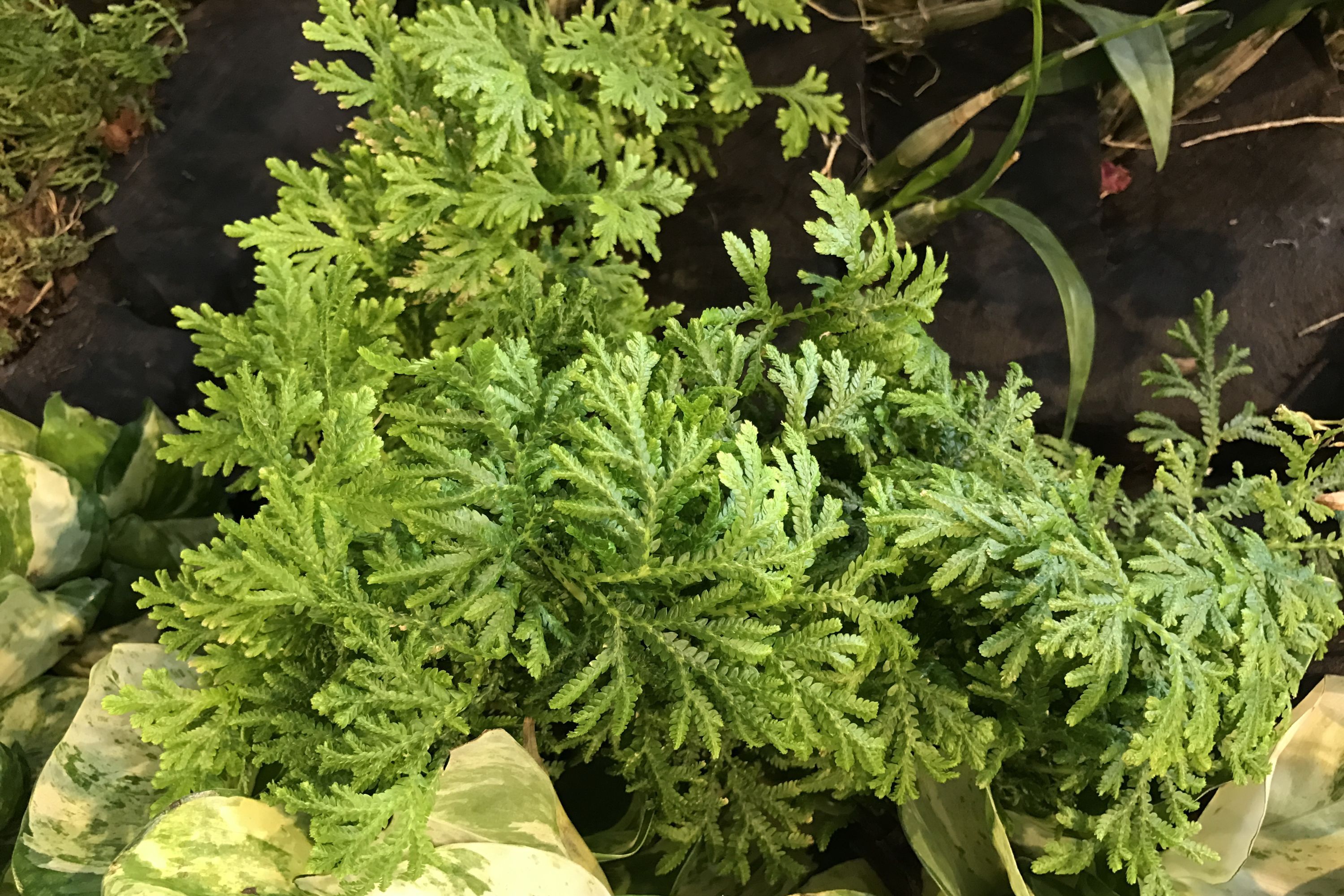Krauss' spikemoss
(Selaginella kraussiana)

Description
Selaginella kraussiana is a species of vascular plant in the family Selaginellaceae. It is referred to by the common names Krauss' spikemoss, Krauss's clubmoss, or African clubmoss, and is found naturally in the Azores and parts of mainland Africa. It belongs to the very ancient lineage of plants known as the clubmosses. Growing to just 5 cm (2.0 in) high, it is a low-growing, mat-forming evergreen perennial with primitive fern-like leaves, that spreads via rooting stems. Its native distribution is the Macaronesia, and parts of south and east Africa. Its native distribution in the Azores was controversial up to 2005, when spores of this species were discovered in 6,000-year-old fossils on Pico. Since its introduction to Britain in 1878 it has spread slowly, and was first recorded in the wild in 1917 in west Cornwall (UK) and County Leitrim (Ireland), often as a greenhouse weed. Selaginella kraussiana is listed on the New Zealand National Pest Plant Accord since it is an invasive species. It is common in many parts of New Zealand and Australia where it forms dense mats in shaded areas. Selaginella kraussiana is cultivated for ornamental purposes. It requires a minimum temperature of 5 °C (41 °F), and in temperate regions is grown under glass as a houseplant. The species and the cultivar ‘Brownii’ have both gained the Royal Horticultural Society's Award of Garden Merit. Other cultivars include ‘Aurea’ and ‘Gold Tips’. They prefer a sheltered spot in full or partial shade, in moist, well-drained acid or neutral soil. In the Winter a cultivar often described as Selaginella kraussiana 'Frosty Fern' is sold as a house plant due to its white tipped foliage, however this is more normally the taller growing Selaginella martensii rather than the shorter, creeping S. kraussiana. Selaginella is the sole genus of vascular plants in the family Selaginellaceae, the spikemosses or lesser clubmosses. This family is distinguished from Lycopodiaceae (the clubmosses) by having scale-leaves bearing a ligule and by having spores of two types. They are sometimes included in an informal paraphyletic group called the "fern allies". S. moellendorffii is an important model organism. Its genome has been sequenced by the United States Department of Energy's Joint Genome Institute.
Taxonomic tree:







